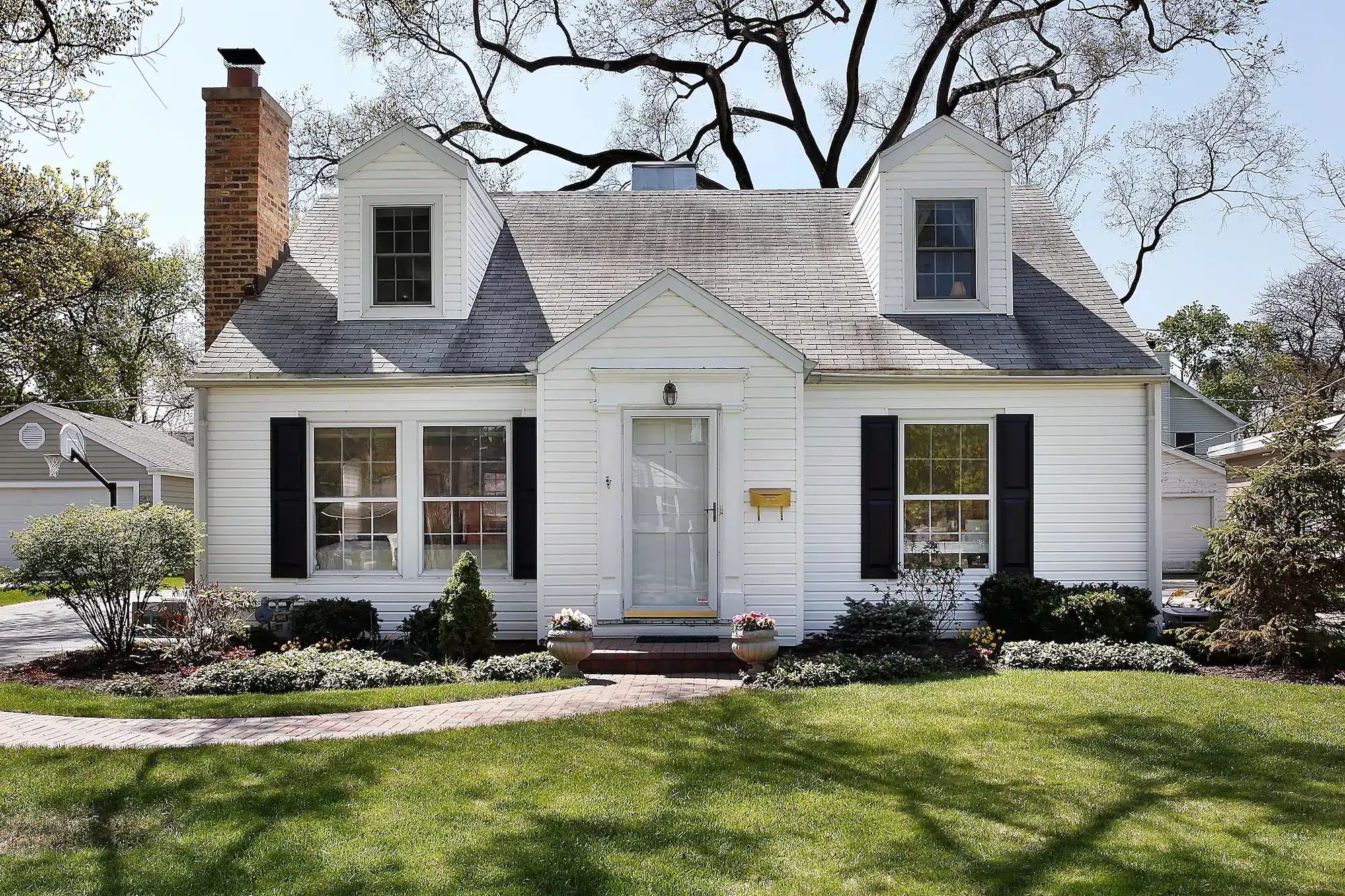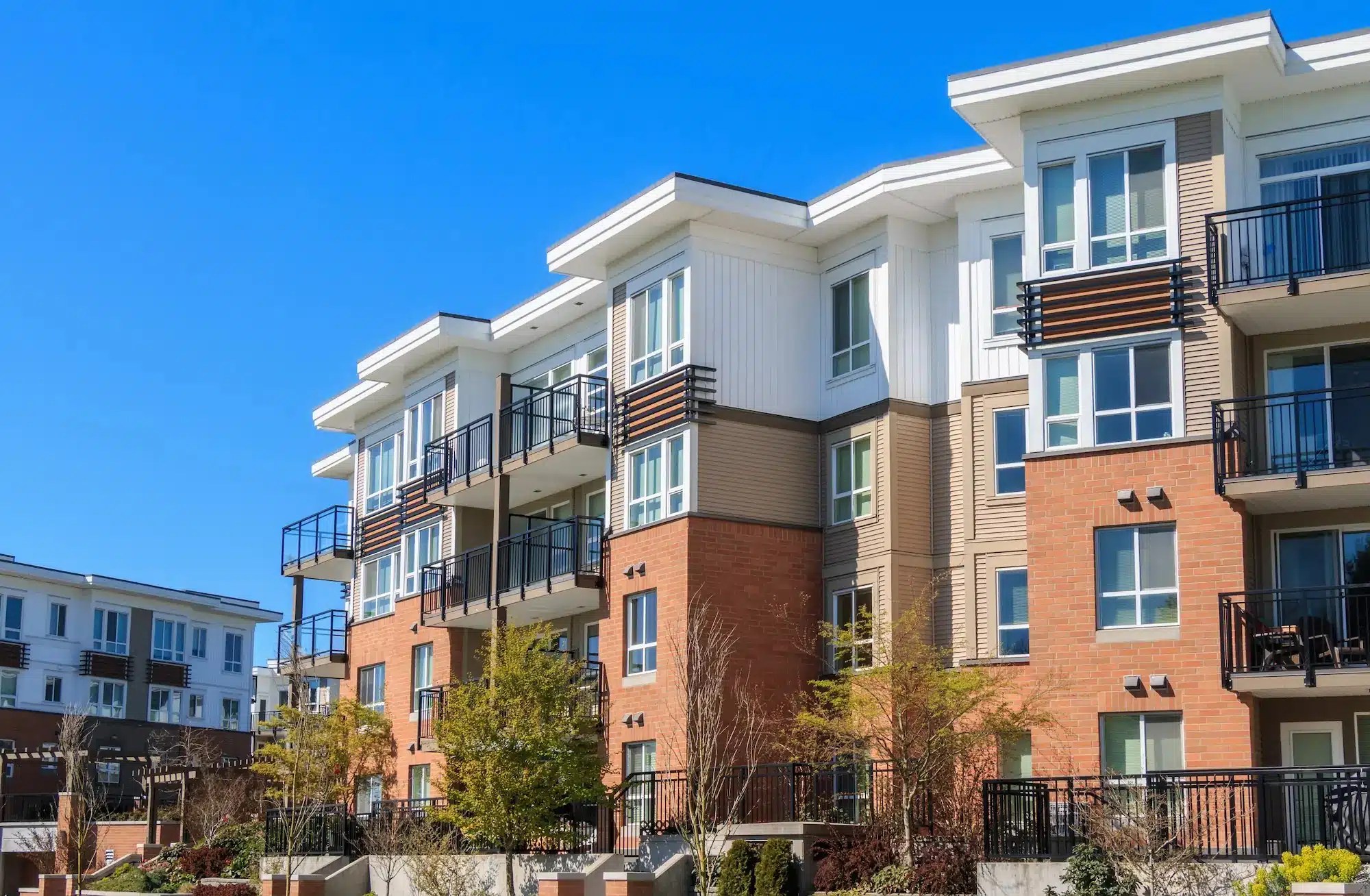According to the Census Bureau, in 2022, there were 15.1 million vacant homes. These vacant homes, including rentals, represent 10.5% of the country’s total housing capacity. +While there may be enough places to live, not all of them are up to code, safe, or remotely usable. Many of these vacancies exist in places that are experiencing low growth rates. However, cities are booming, with many opting to live in the city for convenience, if they can afford to. This has led more developers to seek unique ways to fit more people into spaces that were not designed as homes. One unique option represents itself in vacant office spaces, providing spaces for those looking to live in heavily populated areas where housing is scarce.
Is this trend a fleeting response to current circumstances, or could it bring in the next construction boom?

The Driving Forces Behind Office-to-Apartment Conversions
Changing Work Patterns
One of the most significant catalysts for the conversion of office spaces into apartments is the change in work patterns. Remote work, initially a temporary solution during the pandemic, has proven to be effective and, in many cases, more productive. According to the Pew Research Center, around 22 million employed adults (aged 18 and over) in the U.S. work from home all the time. This equates to about 14% of the population, which while relatively low, is still enough to matter. Further, over one-third of workers in the U.S. who can work remotely do so, while 41% are part-time remote in a hybrid setup. It’s also estimated that more than 1 in 5 American adults will work remotely by 2025. Upwork’s Future of Remote Work study also shines some light on the state of remote productivity, with one-third of hiring managers reporting that productivity has increased due to remote work settings. Not only that but offering remote or hybrid work may also help with employee retention. Owl Labs’ State of Hybrid Work 2023 survey reported that 26% of full-time office workers changed jobs in 2023, compared to only 17% of hybrid or remote workers. On top of employee preference, there have also been benefits for companies. Companies have realized that they can reduce overhead costs by downsizing their physical office spaces. This has left many office buildings underutilized, making them prime candidates for conversion into residential properties.
Urban Housing Shortage
While there really isn’t a shortage of housing, there is a very clear shortage of affordable housing, especially in urban areas. There are only 7 million affordable units for 11 million households with extremely low incomes. The lack of housing options for renters with exceptionally low incomes is driving an affordable housing shortage across the nation. However, when it comes to other income groups, there are enough affordable rental units to accommodate all households.
Converting office buildings into apartments via adaptive reuse provides a practical solution to increase housing stock quickly. It repurposes existing structures, reducing the need for new land development and construction, which can be both time-consuming and environmentally taxing, but also saves the developers and new property owners money. These units are often smaller, and are available for less money than large design-build luxury apartments.
In cities like New York, Boston, and Cleveland the idea of adaptive reuse is being embraced. There are also incentives to do so. The Biden Administration is easing the way with federal programs and tax breaks. There is currently more office space sitting vacant than at any point since 1979. However, the solution isn’t so simple. There are other hurdles to get through before office space apartments can make a heavy difference in the numbers.
Economic Viability
From a financial perspective, converting offices into apartments can be more cost-effective than constructing new residential buildings from scratch. Office buildings, especially those in prime locations, often have robust infrastructure and are already mostly connected to essential utilities. Converting existing buildings can often be cheaper and even quicker than building from the ground up, even when converting older buildings that require more updates or work. Good conversion options, such as buildings that are smaller, pre-war buildings with natural light can even be as much as 30% cheaper than building new. A report from the Urban Land Institute and National Multifamily Housing Council states that conversion projects can take six to 12 months less than constructing a similar property from scratch.
The adaptive reuse existing framework can significantly reduce the costs associated with new construction. Additionally, the potential for tax breaks, and the ability to fit a large amount of rentals into a single building, draws in potential investors. This shift has already started, with post-COVID developers converting more than 110,000 apartments from outdated hotels, office buildings, and other buildings across the nation. More than 58,000 apartments are currently being converted from office buildings.
While these conversions are often profitable and fast, they do require utility work in many cases. A lot of the buildings are older and require new as-builts, concrete scans, and utility locating services to ensure that everything is completed as smoothly as possible. SiteMap® (patent pending), powered by GPRS, offers a simple way to visualize your data, whether it be above ground or below. Through SiteMap®, you can see your subsurface data, as well as your GPRS’ backed as-builts, and even your floor plans. With SiteMap®, stakeholders can:
- Visualize a space before it’s completed
- Make changes in the early stages without extra cost or hassle
- Invite others to collaborate with the project simply, providing a comprehensive examination and eliminating information bottlenecks
- Ensure that utility hookups and tie-ins are safe and operational
- Check historical data against current data
- Meet regulatory demands
- Identify issues before they become a catastrophe
- Walk through the site before completion, digitally
- And more!
With GPRS’ suite of visualization options, stakeholders can even virtually walk through a building before its completion, allowing them to gain public approval, make changes, develop marketing materials, and more. WalkThru 3D allows you to remotely report existing reality capture to stakeholders, managers, contractors, and trades, so that they can walk through the site at their own pace. And, because it is delivered via SiteMap®, you can even digitally measure inside the image to help plan and design better. GPRS helps you Visualize The Built World®, one project at a time.
The Challenges of Office-to-Apartment Conversions

While adaptive reuse to apartments offers numerous benefits, there are still many challenges. Several factors need to be considered to ensure successful conversions, such as:
Zoning and Regulatory Hurdles
One of the primary challenges is navigating the complex land of zoning laws and regulations. These regulations are rather simple at their core: a building is zoned for one type of use, residential, business, and so on. These laws and regulations were largely born after World War II, allowing families to enjoy their homes separately from their work. Many office buildings are located in areas zoned exclusively for commercial use. Changing these designations to residential use requires approval from local authorities, which can be a lengthy and bureaucratic process. Additionally, building codes for residential spaces are often more stringent than those for commercial properties, necessitating extensive renovations to meet safety and habitability standards.
Brett Theodos, a senior fellow with the Metropolitan Housing and Communities Policy Center offers insight, “zoning is a speed bump,” said Theodos. “But mayors are tripping over themselves trying to remove that problem. They are trying very hard to make their downtowns viable, and this is something they can do.”
Cities also have to worry about the tax revenue implications. This is due to the fact that a decent share of revenue comes from commercial property taxes. Most cities can’t afford to lose the tax base of large office buildings. Unfortunately, even a full apartment building is of lower density use than an office. This issue means that fewer people are on the street, there are fewer people at lunch spots and, in turn, less tax revenue.
Structural and Design Considerations
Office buildings are designed with different structural and spatial considerations than residential buildings. For instance, office floors are typically larger and have fewer partitions compared to apartment units. Converting these spaces into functional and aesthetically pleasing living quarters requires creative architectural solutions. This might involve significant interior reconfiguration, such as adding plumbing and electrical systems to accommodate kitchens and bathrooms, as well as ensuring adequate natural light and ventilation. According to some, only 3% of New York City office buildings and 2% in downtown Denver are suited for residential conversions.
This is another way that SiteMap® can help make the conversion a simpler process. When professionals can remotely view the building, ensure compliance, and also avoid excess dangers, it could remove some regulatory lag. A lot of the time, digital twins and site visualization helps developers accurately plan and execute projects, especially projects like these, which require a lot of planning and attention to detail.
Financial Risk and Market Demand
Despite the potential for high returns, there is inherent financial risk in any real estate development project. Developers must conduct thorough market research to ensure there is sufficient demand for residential units in the area. Economic downturns, changes in housing market trends, or shifts in population dynamics can all impact the viability of these projects. Additionally, the initial investment required for conversion can be substantial, and securing financing may pose a challenge. This is especially true if the building isn’t ideally suited for conversion, with large floor plans, and a lot of potential changes. According to the CBRE Group, the costs associated with making certain physical changes can range from $100 per square foot to over $500 per square foot, depending on the building design. This requires greater risk, and greater investment, of which some developers and stakeholders just aren’t willing to put up.
Opportunities and Benefits of Office-to-Apartment Conversions

Despite the challenges, the benefits and opportunities presented by office-to-apartment conversions and adaptive reuse as a whole are substantial.
Revitalizing Urban Centers
Many urban centers have been experiencing a decline in vitality, partly due to the decrease in demand for office spaces. Converting these spaces into residential apartments can breathe new life into these areas. Increased residential occupancy can lead to a surge in local businesses, such as restaurants, retail stores, and entertainment venues, creating a more vibrant and dynamic urban environment. Increasing the number of office-to-residential conversions would also lead to more mixed-use spaces in downtown areas. This tends to make these spaces more resilient to future changes. This process also makes these areas safer, as utilities continue to be mapped, renovated, and made available to a larger population. GPRS carries a 99.8% accuracy rating across over 400,000 jobs nationwide, and when combined with SiteMap®, provides precise and accurate visualizations.
Environmental Sustainability
From an environmental standpoint, repurposing existing buildings is more sustainable than new construction. It reduces the need for raw materials and minimizes construction waste. Therefore, these conversions have a smaller carbon footprint than new housing projects. By just reusing concrete, for example, we can avoid the release of millions of pounds of carbon dioxide per building. Additionally, many older office buildings are located in central areas with established public transportation networks, promoting sustainable urban living and reducing the reliance on cars.
Addressing Housing Shortages
The most significant benefit is the potential to address the housing shortage crisis. By converting underutilized office spaces into residential units, cities can quickly increase their housing stock. This is particularly important in densely populated urban areas where land for new development is scarce. Affordable housing options can be created in prime locations, providing more people with the opportunity to live close to their workplaces and essential services.
Case Studies: Successful Office-to-Apartment Conversions
There is a great potential for these spaces, just as we’ve seen in these cases below:
- The Equitable Building, Atlanta
The Equitable Building in Atlanta, originally constructed as an office building in 1968, was recently transformed into residential apartments. The conversion project involved redesigning the interior layout to create over 300 modern apartments while preserving the building’s iconic exterior. This project provided much-needed housing in downtown Atlanta while also preserving a piece of the city’s architectural heritage.
- 100 Van Ness, San Francisco
In San Francisco, the former AAA office building at 100 Van Ness was converted into 418 luxury apartments. The building’s transformation included adding residential amenities such as a rooftop garden, fitness center, and lounge areas. This project showcased how office-to-apartment conversions could cater to high-end markets, offering luxurious urban living spaces with stunning city views.
- The Old Post Office, Chicago
Chicago’s Old Post Office is a massive Art Deco building, which had been vacant for decades before being transformed into a mixed-use development. The project included converting parts of the building into residential units while retaining commercial spaces. This adaptive reuse project managed to uniquely provide new housing while creating somewhat of a vibrant mixed-use community, blending residential, commercial, and recreational spaces.
The conversion of office spaces into apartments represents a significant shift in the real estate and construction industry. With a huge homeless crisis, and another affordable housing crisis, becoming creative will be the saving solution and ultimate answer to many housing issues within the nation. SiteMap® helps visualize these projects in stunning accuracy and detail, seeing stakeholders, construction teams, and other professionals throughout the project lifecycle, from planning to move-in day. Backed by GPRS’ elite team of Project Managers, SiteMap® is here to help you Visualize The Built World, as you build it.
Learn more about how SiteMap® can help you visualize your conversion, contact us today.
